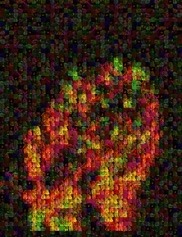Kunes S, Botstein D, Fox MS.
Formation of inverted dimer plasmids after transformation of yeast with linearized plasmid DNA. Cold Spring Harbor symposia on quantitative biology. 1984;49 :617-28.
AbstractThe formation of an inverted dimer plasmid on transformation with linear molecules is formally analogous to the fusion of the daughters of a broken chromosome at their broken ends. In the latter case, this leads to the formation of a dicentric chromosome, which could break at anaphase. Hence the process is cyclic. Similarly, when our linear molecules are modified by the addition of a cloned yeast centromere, dicentric inverted dimers are not obtained. Instead, we obtain monocentric plasmids with partial duplication and deletion that apparently derive from a process of fusion, bridge-breakage, and fusion. This is not surprising, since it is known that dicentric plasmids undergo breakage in yeast (Mann and Davis 1983). However, any apparent similarity of this process to that which occurs with a broken chromosome in maize must be tempered by the special nature of the transformation process. Most significantly, inverted dimers are rare when sonicated carrier DNA is not present during the transformation. This requirement is not understood, but it is a condition that may not be met in a yeast cell harboring a broken chromosome. It is possible that carrier DNA induces a repair process that results in fusion. On the other hand, a property of the transformation process that results in an inhibition of fusion may be overcome by the presence of carrier DNA. Most inverted dimers are apparently formed from an interaction between two input linear molecules. We cannot rule out the possibility that a minor fraction derive from a single molecule. Thus, the fusion of two input molecules is a much more efficient process than a replicative process that could occur with single linear molecule. For a similar fusion process to occur with a broken yeast chromosome, replication would be required. We do not know if a broken yeast chromosome can replicate. Evidence consistent with the presence of a breakage-fusion-bridge process in yeast has been obtained through the formation of dicentric chromosomes via meiotic recombination (Haber et al. 1984). Spores from these meioses sometimes give rise to a clone that is mixed for markers of the chromosome that could have been dicentric. A process of fusion-bridge-breakage could account for the formation of some of these mixed clones. However, the dicentric chromosomes apparently often survive meiotic disjunction and break in the spore's first mitotic anaphase or possibly in a later generation. Thus, the interpretation of the origin of these mixed clones is uncertain. Some aspects of the fusion process are especially intriguing.(ABSTRACT TRUNCATED AT 400 WORDS)

